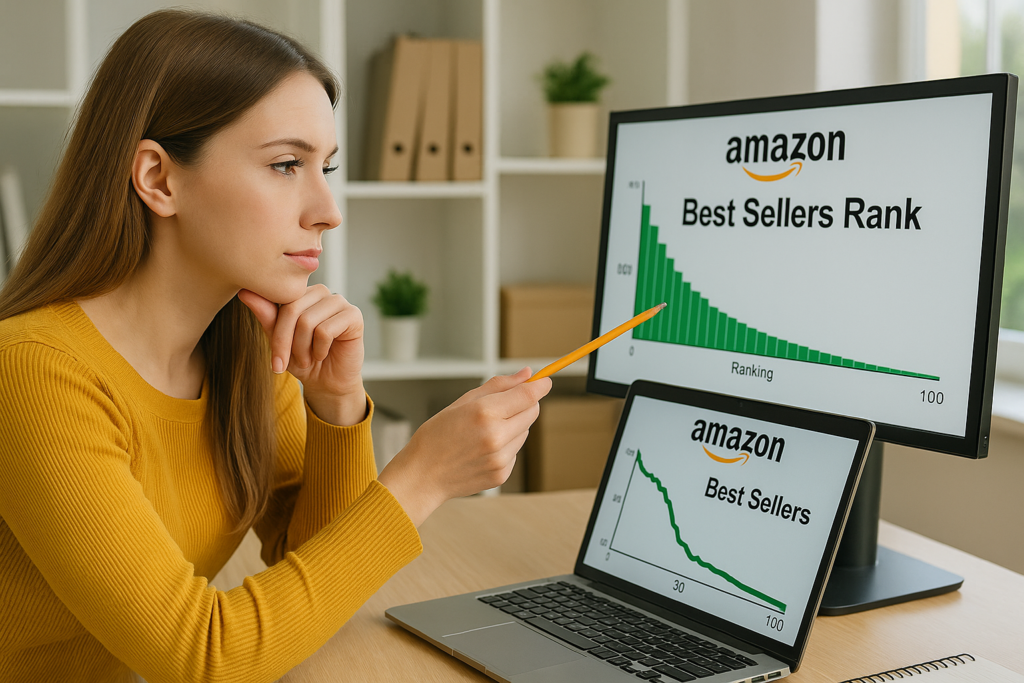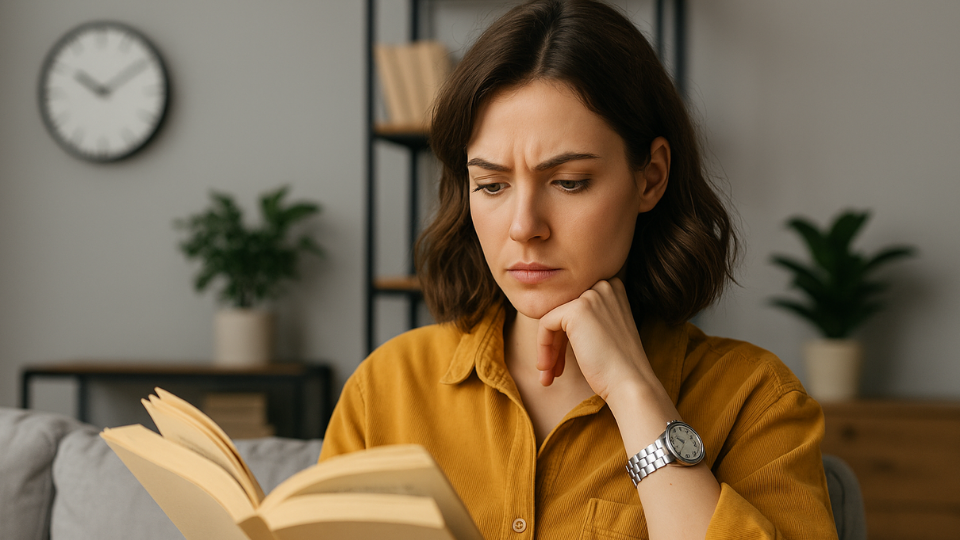How does Amazon decide which books climb to the top of its charts?
That’s the job of the Amazon Best Sellers Rank (BSR): a dynamic number that changes hourly and holds the key to a book’s visibility and discoverability on the platform.
This blog breaks down exactly how the Amazon Best Sellers Rank works, what affects it, and how you can use it to your advantage—especially if you’re planning to publish. Let’s get into it.
What Is Amazon Best Sellers Rank?
Amazon Best Sellers Rank (BSR) is a number that reflects how well a product—like a book—is selling compared to others on the platform.
It updates frequently and plays a major role in how books are surfaced across Amazon’s marketplace.
Unlike traditional bestseller lists that consider critical acclaim or review counts, Amazon’s BSR is driven purely by sales activity.
A single spike in purchases can shift your ranking in real time, which is why many authors watch it closely during launch week.
BSR Appears on Every Product Listing
You can find a book’s BSR under the Product Details section on its Amazon page. Every product has one overall BSR and possibly multiple category-specific ranks.
A Lower Rank Means Higher Sales
A BSR of #1 means that product is currently outselling every other book on Amazon. The higher the number, the fewer sales it’s getting relative to others in the same store.
BSR Only Reflects Sales. Nothing Else.
Reviews, ratings, author status, or social media buzz don’t factor into BSR. It’s strictly about how many people are buying and how fast.
How Amazon Calculates Best Sellers Rank
Amazon doesn’t publish the exact formula behind BSR, but there’s enough data and experience from thousands of publishers to understand what drives it. The two key factors are how many sales your book gets and how recently those sales happened.

The system updates roughly every hour, which means your rank can fluctuate quickly depending on buyer activity. Some changes are subtle, others dramatic, especially during a launch or promotion. This is why timing and campaign coordination matter so much.
Sales Volume and Recency: The Two Big Factors
- Amazon gives more weight to recent sales than to older ones.
- However, historical performance still plays a role. A book with consistent sales over time may rank better than one with a single big spike.
- The algorithm balances both, which is why you’ll see books rise quickly and then gradually settle if sales slow down.
The Role of Free vs. Paid Sales
Free downloads don’t count toward your Best Sellers Rank. That means if you’re running a KDP Select promotion or giving your book away, you won’t see any immediate change in your BSR. Amazon tracks free and paid books separately, and only paid purchases influence your standing on the main bestseller charts.
This is why some authors use free promos for exposure, but follow them up with paid pushes to gain actual ranking traction.
What Counts as a Sale?
Not all purchases are treated the same. Pre-orders count as sales, but they’re applied on launch day rather than when the order is placed.
Bulk purchases may register, but if they appear suspicious—say, a hundred orders from the same address—they might be flagged or filtered out.
Amazon’s system is built to detect manipulation, so organic, individual sales are the most reliable way to boost your rank.
Understanding the Difference Between Amazon Best Sellers Rank and Category Rankings
Many authors confuse Amazon’s overall Best Sellers Rank with their category rankings, but the two serve different purposes.
Understanding both is key to interpreting your book’s performance accurately.
The Amazon Best Sellers Rank is a single number that reflects your book’s position across the entire Kindle or print store.
It’s a broad measure of how your book stacks up against everything else being sold, whether that’s fiction, cookbooks, or business titles.
On the other hand, category rankings are tied to specific genres or subgenres you’ve selected when publishing.
You might have a BSR of 25,000 overall, but still hold the #1 spot in a micro-niche like “Entrepreneurship Short Reads.” These category rankings are what earn your book the coveted orange “#1 Best Seller” badge.
While your overall BSR tells you how fast your book is moving compared to everything else, your category rank tells you how well it’s doing within your niche.
Both are important—but for most authors, especially first-timers, it’s the category ranking that opens doors.
How Book Categories Affect Your Amazon Bestseller Ranking
Choosing the right categories when you publish your book can make or break your chances of earning a bestseller badge.
Amazon lets you appear in two primary categories by default, but strategic placement is what separates casually listed books from those that climb to the top.
Category selection isn’t about guessing what your book “sort of” fits into—it’s about finding pockets of opportunity.
Smaller categories with less competition make it easier to reach the #1 spot, even with modest sales. These are often called micro-niches, and they’re where many smart authors position their books during launch.
Amazon also allows publishers to request additional subcategories after the book is live.
This is why some books appear to dominate across multiple charts—they’ve been placed strategically through backend requests.
It’s not a loophole, it’s a tactic. And for authors aiming for visibility, mastering this approach gives you a serious edge.
Common Myths About Amazon’s Best Sellers Rank
There’s no shortage of confusion around what BSR really means. Many first-time authors misinterpret the number, leading to unrealistic expectations or misguided strategies.
One common myth is that BSR shows the total number of copies a book has sold. It doesn’t.
The rank reflects how well the book is selling right now compared to other books. A title with a past history of strong sales can still drop in rank if recent purchases slow down.
Another misconception is that high review counts improve your BSR.
While reviews help with buyer trust, they have no direct impact on the rank itself. A book with zero reviews can outrank a heavily reviewed one if it’s selling faster at the moment.
Some also believe that once a book hits a good rank, it’ll stay there.
In reality, BSR shifts constantly. Unless you keep your sales momentum going, your ranking will fall just as fast as it rose.
How to Improve Your Amazon Best Sellers Rank as an Author

Boosting your BSR is not about gaming the system.
It’s orchestrating a sales window that Amazon recognizes as real demand. That usually starts with a well-planned book launch that concentrates as many sales as possible into a short period.
Some authors run targeted email campaigns, pair up with podcast interviews, or coordinate pre-sales before their official launch date.
The goal is to stack sales in a narrow window so the algorithm takes notice. Done right, this push can vault your book up the rankings within hours.
What happens after the launch is just as important. If you want to maintain your ranking—or keep climbing—you’ll need ongoing promotion.
Organic reviews, repurposed media appearances, and long-term visibility strategies all help keep momentum alive.
The BSR isn’t won in a single day. It’s earned through sustained visibility.
How Long Does It Take to Become an Amazon Bestseller?
There’s no fixed timeline. Some books hit #1 in their category within 24 hours, while others take weeks (or never get there at all).
It depends on the niche, the strength of your launch strategy, and how much noise your book can generate in a short span of time.
In low-competition categories, even 20–50 sales in a single day can push a book to the top.
In broader niches like Business or Self-Help, you’ll need significantly more traction to see results. This is why category selection matters just as much as the campaign behind it.
The bottom line? Bestselling status isn’t luck but about planning.
If your sales are timed right and your categories are chosen strategically, hitting that orange badge is more attainable than most authors think.
What Happens After You Hit #1 in Your Category?
Reaching #1 earns you more than bragging rights. It unlocks a visibility loop.
Once your book has that bestseller badge, Amazon is more likely to recommend it in search results, category pages, and “Customers Also Bought” sections.
But the badge doesn’t last forever. If sales drop, your rank can slip within hours.
That’s why the smartest authors don’t stop promoting once they hit #1—they double down. Keeping steady sales after the initial spike helps you stay in front of readers longer.
Still, even a short-lived #1 ranking can have lasting value. You can use it in your marketing, on your website, in your media kit, and in future campaigns.
It’s a credibility marker that positions your book—and your name—as proven and market-ready.
How the Amazon Algorithm Connects to Best Sellers Rank
BSR feeds directly into how Amazon’s algorithm decides what to recommend to readers.
Higher-ranked books are more likely to show up in curated lists, “Customers Also Bought” carousels, and search results—even outside their primary category.
The algorithm favors books that show momentum. If Amazon sees people buying your book at a steady pace, it’s more likely to push it in front of others.
That visibility leads to more sales, which then reinforces your BSR. It’s a feedback loop that rewards early traction.
This is why timing your launch—and sustaining post-launch promotion—matters.
A spike in sales gets you noticed, but it’s consistency that keeps the algorithm interested. BSR is the signal. The algorithm is the amplifier.
Life IPO: How Trelexa Helps You Launch Your Expertise Into Amazon’s Bestseller List
Most authors don’t fail because their ideas are weak. They fail because their book never reaches the right audience fast enough.
That’s exactly what Trelexa’s Life IPO program is built to solve. It’s a publishing strategy designed for experts who want to earn the Amazon bestseller badge and make it count.
Think of Life IPO like taking your knowledge public. You bring your expertise.
Trelexa handles everything else, from chapter development to PR to a coordinated launch that targets two low-competition Amazon categories.
This gives your book the best possible shot at hitting #1 where it matters.
The process is fast, too. A one-hour interview becomes a professionally edited chapter.
Your book is bundled with other credible voices and positioned with national media coverage, podcast exposure, and a category-optimized launch strategy.
It’s the same BSR playbook smart marketers already use—only systemized and done with you.
Final Thoughts
Amazon’s Best Sellers Rank is a real-time signal of buyer demand. And if you understand how it works, you can use it to position your book for maximum visibility, both inside and outside the platform.
For authors ready to publish with purpose, knowing how to time your sales, pick your categories, and sustain momentum makes all the difference. And if you want support doing that the smart way, programs like Life IPO exist to help you turn your knowledge into lasting visibility.
The badge might be digital, but the results are real. In the world of publishing, credibility is currency. And bestseller status still opens doors.

